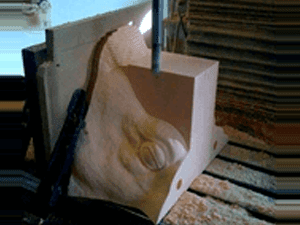
Rapid prototyping has been used by many companies needing to create lifelike prototypes and models of parts that will be used to create different items.
Use of additive manufacturing technology has been used since late in the 1980s and has since taken rapid prototyping into new areas, such as creating actual products, rather than just a prototype or model. When this process is used to create items that are ready to be used it is typically used to create only a small number of them.
Artists have made use of this technology as well. This allows them to create some of the more difficult shapes that they would need to finish sculpting their masterpiece. Many art exhibitions contain items that were, at least partially, created using rapid prototyping.
The rapid prototyping process
To begin the rapid prototyping process, a virtual design is created with CAD, computer aided design, or with another animation modelling software program.
This virtual design will be the starting point to create the model or prototype.
The image will be the basis for the final protocol that is developed.
Rapid prototyping takes the image and begins applying very thin layers of powder, liquid, or sheet material until the final product has been created. The model takes shape as cross sections of the materials begin to take form into the intended design. The cross sections are fused together once they are complete. The completed physical model and the virtual model should be nearly identical at the end of the process.
Benefits of rapid prototyping
This process is called rapid prototyping because it allows the user to create the finished product very quickly. If these prototypes had to be created manually it would take anywhere from several hours to possibly several days. If the model is very complex it could take a great deal of time to create when doing it manually.
When rapid prototyping is used a project can be completed in just a few hours. The exact time it takes varies depending on the specific type of machine that is used and how big the prototype will be in its final form. The amount of time that it will take to complete the project will also depend on the number of models that are being completed using this process.
While it is less expensive to create the models using injection moulding if you are creating a large amount of the same items, when the goal is to complete only a few parts then the additive fabrication can provide a significant cost saving. Many experts have claimed that rapid prototyping is now on the way to becoming rapid manufacturing and that as technology advances we will see much more of this process on a larger scale.